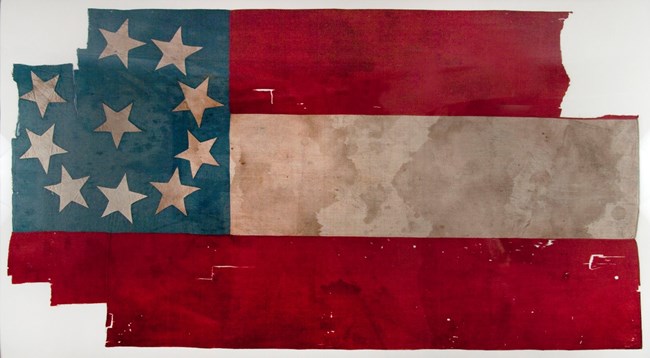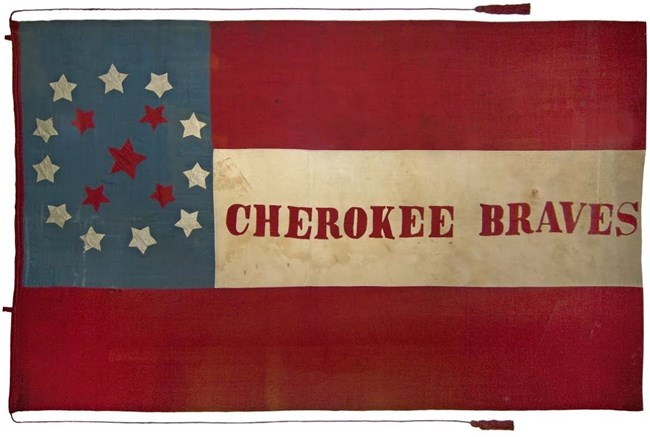
Wilson's Creek National Battlefield is home to one of the finest publicly held museum collections representing the American Civil War in the Trans-Mississippi West Theater.
The museum collections include historic objects and documents from many of the battles in the Trans-Mississippi Theatre of the War. The collections also contain objects from prisoner of war camps where Trans-Mississippian soldiers were detained and perished, items documenting battlefield medicine and advances in treatment, objects and documents that lead to a greater understanding of the role of women in the Civil War, and items documenting the naval aspect of warfare in the Trans-Mississippi Theater. Virtual Museums 
Cherokee Braves Flag and the Centennial One Object Exhibit The flag symbolizes the Cherokee Nation's support of the Confederacy. The pattern copies the Confederate First National flag: the circle of 11 white stars represents the states that formed the Confederacy. Within the circle are five red stars for each of the "Civilized Tribes" – the Choctaws, Seminoles, Chickasaws, and Creeks (with the large center red star representing the Cherokees). The words "Cherokee Braves" announce the unit's fighting resolve at the beginning of the war. The flag represents the Wilson's Creek National Battlefield museum collection in the The Cherokee Braves Flag is the only known example of a Confederate American Indian regimental flag, and is associated with Colonel Stand Watie, a prominent Cherokee tribal leader. |
Last updated: February 6, 2023
